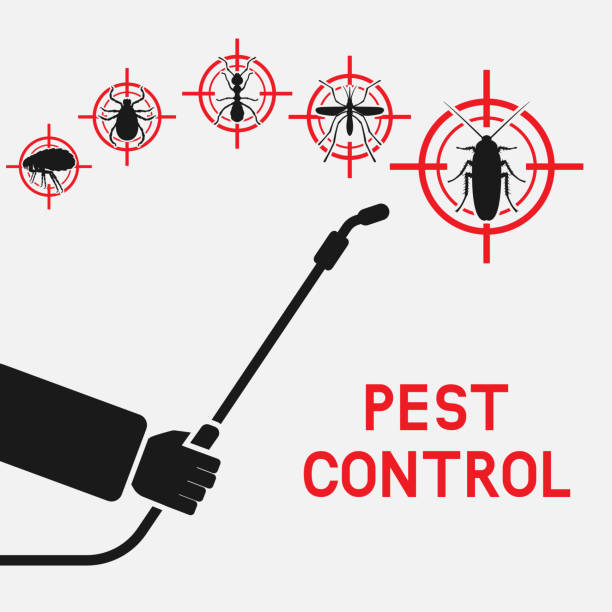Why Trust Pest Control Lockhart for Your Home Protection Needs
Why Trust Pest Control Lockhart for Your Home Protection Needs
Blog Article
Discovering Invasion and Treatment Strategies on the planet of Insect Control
The landscape of insect control incorporates a myriad of difficulties, particularly as problems of typical household bugs continue to advance. Comprehending the behaviors and reproductive patterns of these hassles is vital for developing reliable treatment methods. By integrating preventative steps with innovative administration strategies, such as Integrated Insect Monitoring (IPM), property owners can much better safeguard their atmospheres. However, the efficiency of these approaches may vary dramatically based on certain circumstances. What hidden factors contribute to the success or failing of these approaches in different settings?

Typical Home Pests
When it pertains to handling our home, understanding common home insects is vital. These parasites not just interrupt our convenience yet can also pose health risks and damage home. The most common home insects include ants, cockroaches, rodents, termites, and bed bugs.
Ants, typically seen foraging in kitchens, can infect food and develop large swarms. Rats, including computer mice and rats, can trigger structural damages and carry conditions like hantavirus and salmonella.
Identifying the signs of these parasites, such as droppings, nests, or attack marks, is important for very early intervention (Pest Control Lockhart). Proper cleanliness practices, securing entry factors, and maintaining a clutter-free setting are efficient preventative measures. By determining these common family pests and recognizing their behaviors, home owners can take positive actions to reduce problems, guaranteeing a much healthier living environment
Comprehending Pest Infestations
Insect invasions can rise promptly, turning a minor inconvenience into a significant trouble if not dealt with immediately. Usual variables adding to problems consist of poor sanitation, structural vulnerabilities, and seasonal changes that drive pests indoors.
Identifying the kind of insect is necessary, as various types display different habits and reproductive rates. For instance, rodents may develop nests in surprise locations while pests like roaches prosper in moist environments. Early discovery typically rests on recognizing signs such as droppings, munch marks, or uncommon noises, which can indicate a problem prior to it ends up being serious.
Warm, damp climates can assist in the fast growth of bug populaces, while changes in landscape design or construction can unintentionally develop conducive atmospheres. An enlightened method to recognizing these dynamics lays the groundwork for efficient parasite management methods in the future.
Therapy Methods and Methods
Reliable treatment methods and techniques are important for reducing pest infestations and bring back a safe environment. A diverse approach is usually best, incorporating chemical, biological, and mechanical methods customized to the details pest and the seriousness of the invasion.
Chemical therapies consist of the usage of pesticides and herbicides, which can properly eliminate pests. Proper application and adherence to safety guidelines are essential to reduce dangers to people and non-target organisms. Integrated Insect Management (IPM) encourages the judicious use of chemicals as a click last resource, counting rather on surveillance and limit levels to identify intervention needs.
Biological control methods entail introducing all-natural killers or parasites to lower bug populations. This strategy is significantly popular, specifically in farming settings, as it advertises environmental sustainability.
Mechanical approaches, such as traps and obstacles, offer immediate alleviation from pests without presenting chemicals. Options consist of sticky traps for pests or physical barriers for rats.
Ultimately, the selection of treatment technique should take into consideration the particular parasite, the atmosphere, and possible influence on human wellness and communities. A well balanced combination of these approaches can effectively take care of infestations while promoting lasting pest control options.
Preventive Procedures for Residence
Proactively dealing with bug concerns before they intensify is essential for maintaining a healthy home setting (Pest Control Lockhart). Implementing efficient safety nets can considerably minimize the likelihood of infestations, eventually securing both your residential or commercial property and wellness

Appropriate landscaping likewise plays a vital duty in avoidance. Maintaining bushes and trees trimmed away from your house minimizes the opportunities of parasites discovering their way indoors. Furthermore, guarantee that drain systems are functioning efficiently to avoid standing water, which can pull in insects and various other pests.
Lastly, regular examinations are a good idea. site here Consistently looking for indications of pest task enables for early treatment. By embracing these precautionary steps, house owners can produce an environment that is much less congenial to pests, therefore improving their overall top quality of life and minimizing the need for considerable bug control interventions.
Industrial Pest Control Approaches
A detailed approach to industrial pest control is crucial for services intending to preserve a secure and hygienic setting. Effective approaches involve a mix of regular assessments, employee training, and the application of Integrated Parasite Administration (IPM) techniques.
Regular assessments enable early discovery of pest activity, permitting timely intervention. Services should establish a regular timetable for these assessments, concentrating on risky areas such as kitchen areas, storage space areas, and waste disposal sites. Worker training is just as essential; personnel needs to be educated on the signs of bug problems and the importance of reporting them instantly.
Carrying out IPM techniques aids mitigate insect problems sustainably. This consists of environment alteration, such as securing access factors and reducing clutter, in addition to utilizing natural deterrents before turning to chemical therapies.

In addition, teaming up with a qualified pest control company makes sure accessibility to professional understanding and sophisticated treatment choices. This partnership can lead to customized pest control plans customized to the details demands of the organization, decreasing threats and boosting general effectiveness. Ultimately, a proactive and informed strategy cultivates a pest-free atmosphere, securing both public health and wellness and company reputation.
Conclusion
In conclusion, efficient Website pest control requires a thorough understanding of typical house insects and their actions, coupled with targeted therapy approaches. Executing preventative measures together with therapy techniques such as Integrated Bug Management and biological control improves the capacity to reduce invasions.
Report this page